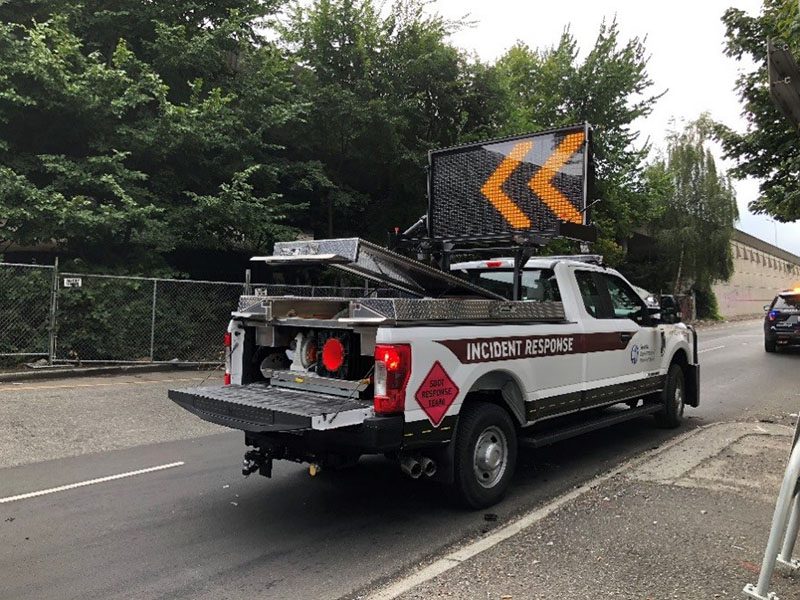 The Seattle Response Team (SRT) provides many services. Our members receive specific training and each SRT truck is equipped with many tools to accomplish a wide variety of jobs. Photo Credit: SDOT.
The Seattle Response Team (SRT) provides many services. Our members receive specific training and each SRT truck is equipped with many tools to accomplish a wide variety of jobs. Photo Credit: SDOT. Summary:
- This week is Crash Responder Safety Week, a national initiative to raise awareness about first responders and the work they do in the street to support the safety of the traveling public.
- The safety week runs from November 14-18, 2022 – but the effort is critical to keep in mind every day of the year. This year’s theme is “Respect Our Roadside Heroes.”
- First responders include transportation and public works employees, law enforcement, fire and rescue, emergency medical services, towing, and other responders. Our SDOT Response Team works 24/7 to keep our streets clear and operating safely and efficiently.
- Join us to help ensure the safety of these workers, and everyone traveling. This blog post includes important reminders about how you can help prevent serious injuries or fatalities by paying close attention to your surroundings while driving, keeping an eye out for pink incident warning signs, and moving over and slowing down for emergency response vehicles and workers.
“Every minute of every day, law enforcement, fire and rescue, emergency medical services, public works, transportation, towing, and other responders work roadside to make roadways safe for all road users. Unfortunately, these traffic incident responders put their lives at risk when clearing each of the nearly 7 million annual motor vehicle crashes or the broader range of incidents such as stalled vehicles or roadway debris. Crash Responder Safety Week is an opportunity to promote road user awareness and adherence to Move Over laws and Traffic Incident Management training for all traffic incident responders.”
– Federal Highway Administration (FHWA)
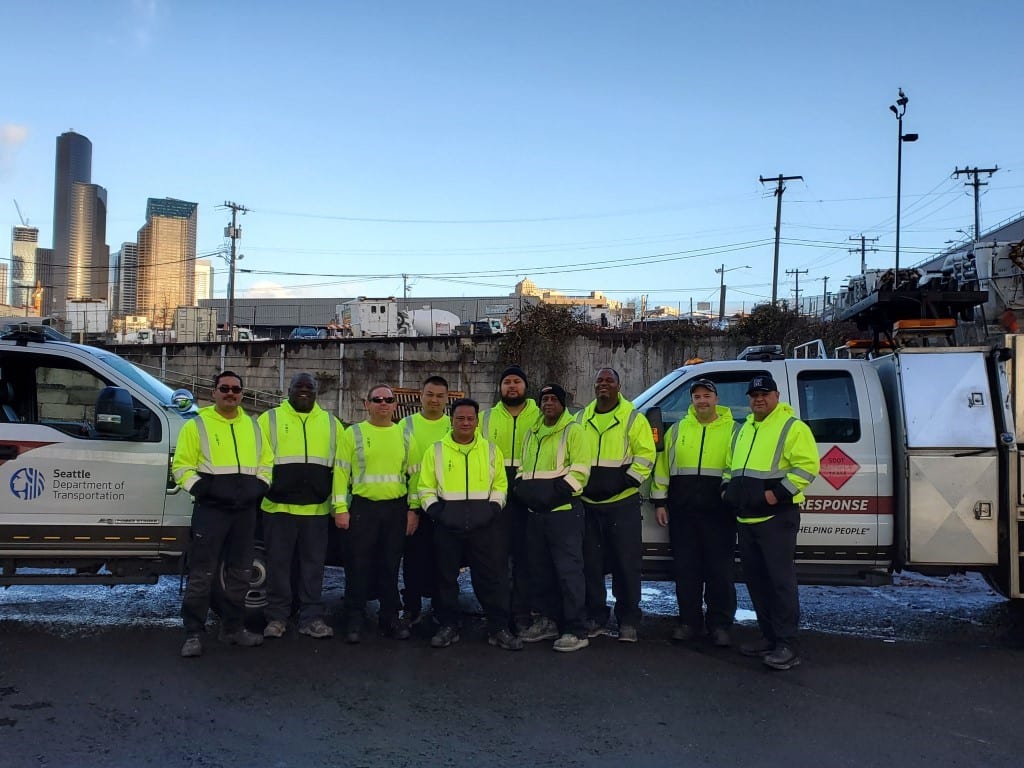
Our SDOT Response Team helps keep traffic moving 24/7 by promptly removing debris in the street, moving vehicles out of the traffic lane after a crash or collision, assisting stranded motorists, providing emergency traffic control for incidents and responding to issues with traffic signals, and more. The team was launched in 2018.
The Washington State Department of Transportation (WSDOT) Incident Response Team has provided incident response on state highways for years, yet Seattle is one of only a few American cities to provide these services on city streets.
Check out our this previous blog post for additional details on how our Traffic Incident Management (TIM) program and Traffic Operations Center (TOC) work. Please visit our website for guidance on how to report issues on city streets. This includes when to dial 9-1-1 if you encounter a vehicle collision, emergency, or life-threatening situation – and when to contact us to report non-urgent situations through our Find It/Fix It app, by email, or by phone. You can also learn about the services our SDOT Response Team provides.
So how can I help keep first responders safe in the roadway while they respond to vehicle crashes and other incidents?
Drivers have an extremely important role – and responsibility – to help protect the safety of first responders, and other people traveling near crash scenes and other incidents in the street.
Here’s how you can help:
1) Pay attention
Please always follow the speed limit, stay off your phone completely (it’s the law!) and keep an eye on your surroundings. Particularly in darker fall and winter days, it’s critical that you pay attention to the street’s most vulnerable travelers – people walking, rolling, and biking.
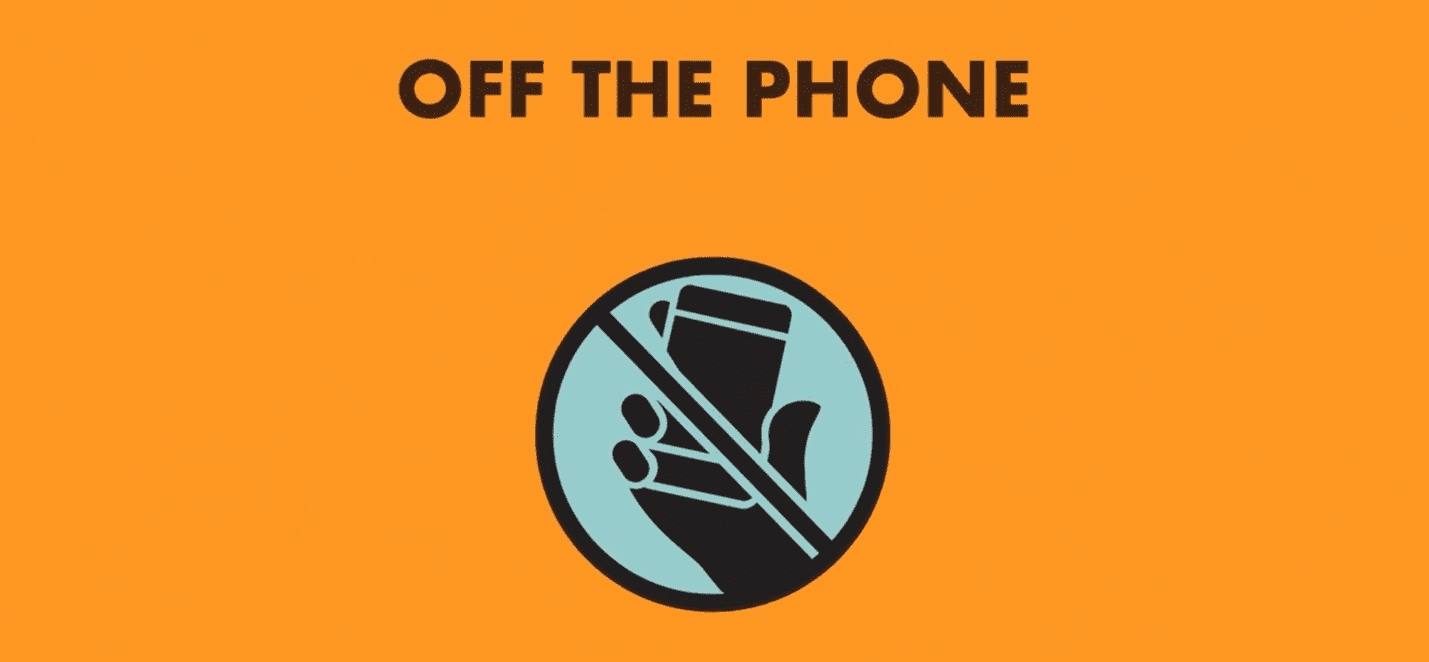
2) See pink, think compassion
If you see a pink fluorescent warning sign on the road, that means there is an incident ahead. The Federal Highway Administration established this bright color for signs indicating an incident so the public can distinguish incident warnings from the familiar orange construction signs.
One way to remember this is that when you see pink, think compassion, because someone is involved in an incident up ahead.
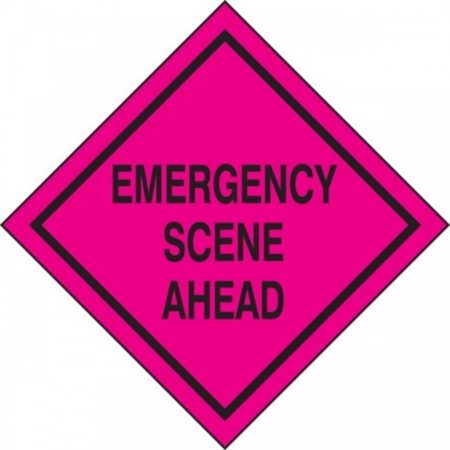
3) Move over and slow down
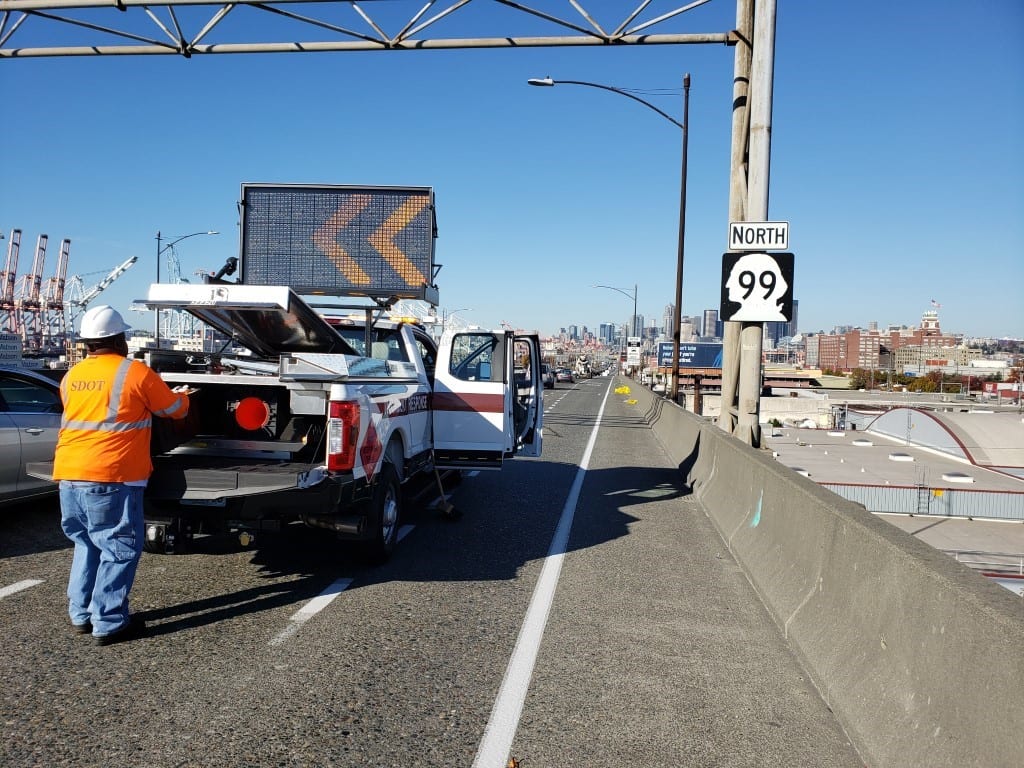
Always pull over when you see a fire truck or ambulance with lights and sirens in traffic. There’s also a Move Over, Slow Down law for response vehicles on the side of the road. If you are driving and see emergency and other response vehicles with flashing lights on the shoulder, Washington State law requires you to move over to the next lane if safe to do so. If you cannot move over, you must slow down as you pass the emergency vehicles. This helps keep the response team safe and lets them finish their work efficiently.
In 2020, the law expanded to include highway construction and maintenance vehicles, utility vehicles and other vehicles providing roadside assistance when they have lights flashing.
“We cannot overstate the importance of every driver doing their part – please slow down, move over, be safe, and pay attention at all times while you are driving. If everyone participates in this effort to protect incident response workers and other travelers, we can all make it home safe to our families each night. We deeply appreciate your support and continued attention to this matter. Thank you.”
– Patricia Westsik, Seattle Department of Transportation